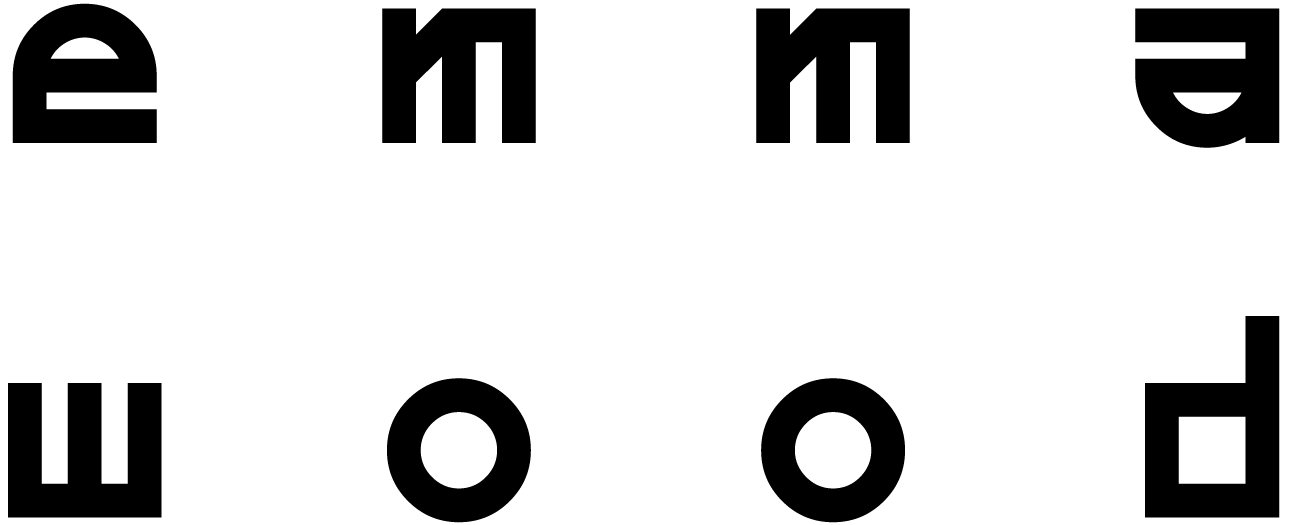winding bobbins
Loading the first bobbins with silk.
As the time to start weaving the first sample of velvet inches closer, all 150 of the initial bobbins are being wound with silk.
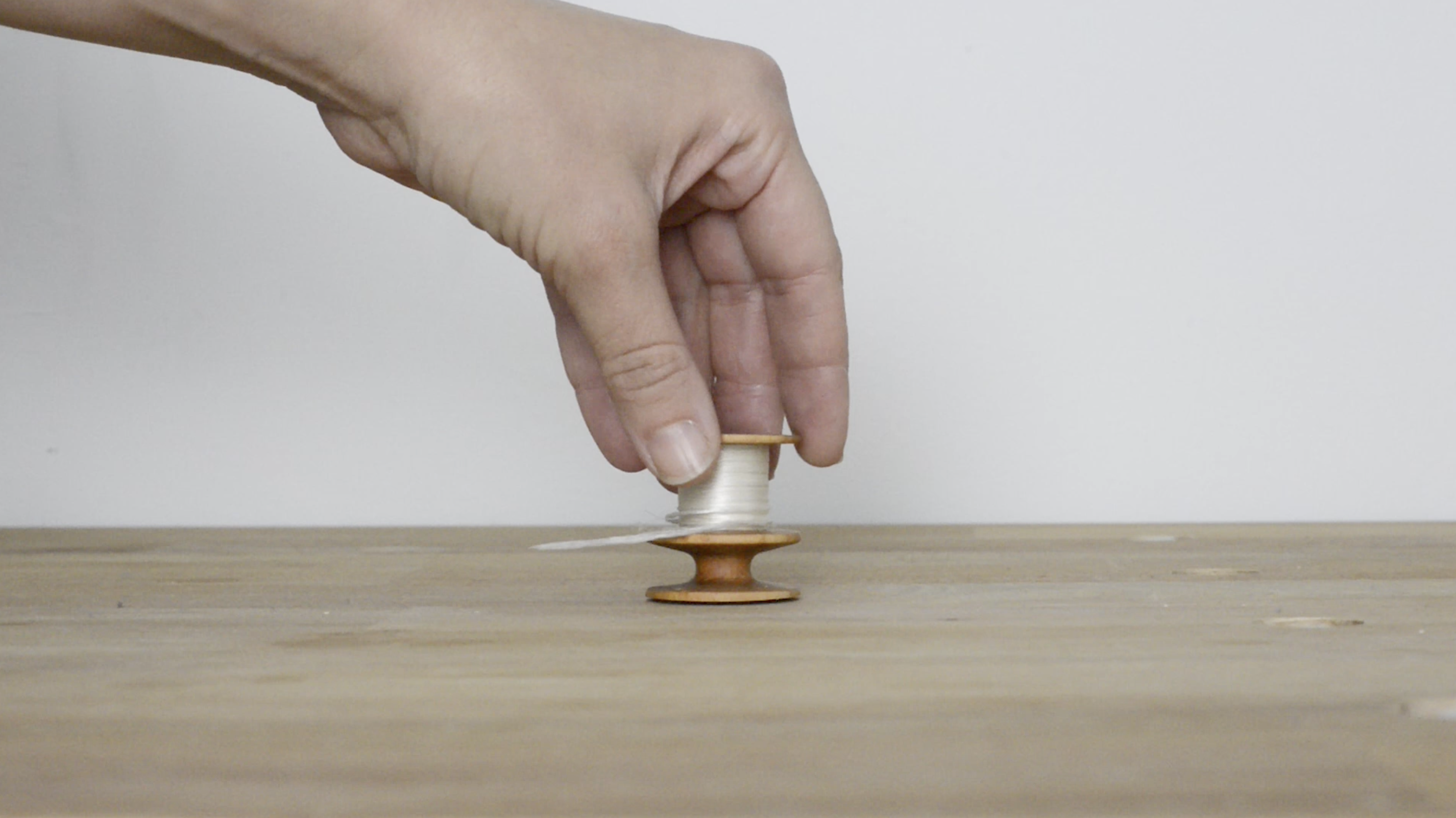
calculating velvet
The test velvet will measure 10cm in width, with 15 silk bobbins per centimetre. This density is based on the epcm I calculated from my analysis of the historic velvets at Cosprop in September. I chose to wind 15 metres of silk on each spool, as I wanted to have enough warp length to allow for multiple threading configurations and experimentation.
Each velvet rod has a diameter (D) of 2,2mm. To calculate how much silk is needed for one loop, the circumference of the rod needs to be found as follows:
2π × (D ÷ 2) = 6,91mm
Since roughly 7mm are needed for each loop of silk, and I estimate 5 loops of velvet per cm, I can determine that 35mm (3,5cm) of silk is needed for each 1cm of velvet to be woven. I can then determine the total length of woven velvet I can obtain from 1500cm of silk warp bobbins:
1500 ÷ 3,5 = 428,57cm
I can now predict that winding 15m of silk onto the test bobbins will allow me to weave approximately 4,3m of velvet, not allowing for wastage. Since I have established a preferred test warp length of 4m over the course of my work as a weaver, this bobbin warping quantity seems well-suited.
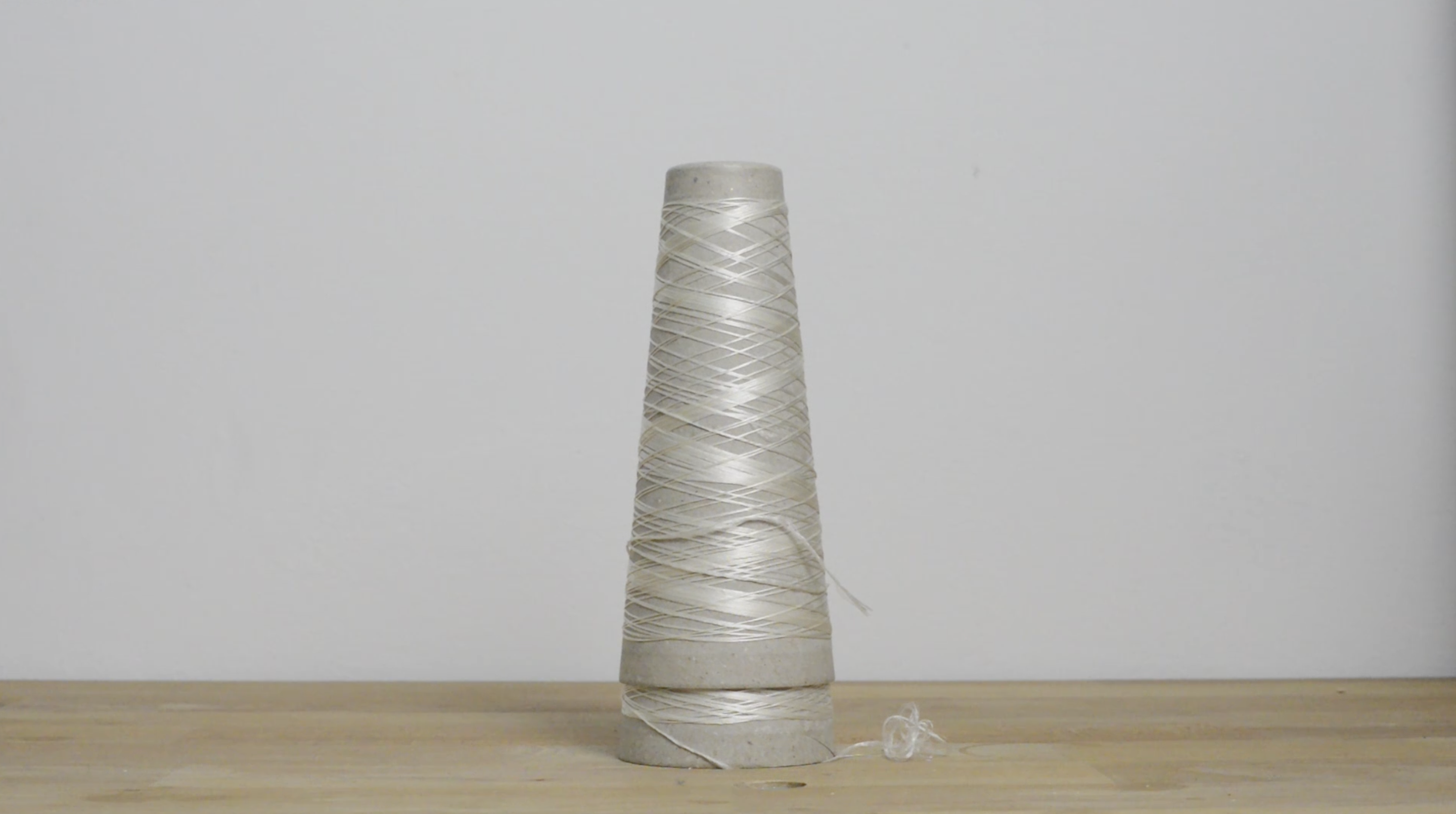
measuring the bobbin warps
For each bobbin, I needed to measure out 15m of silk. I don’t have an hand-winding counter, so I used my automatic winding machine to split the larger spool of silk onto separate winding cones. My winding machine works in yardage, and I wanted to have extra yarn to allow for wastage at the beginning and end of the warp, so I converted and then rounded up 15m to 20yds.
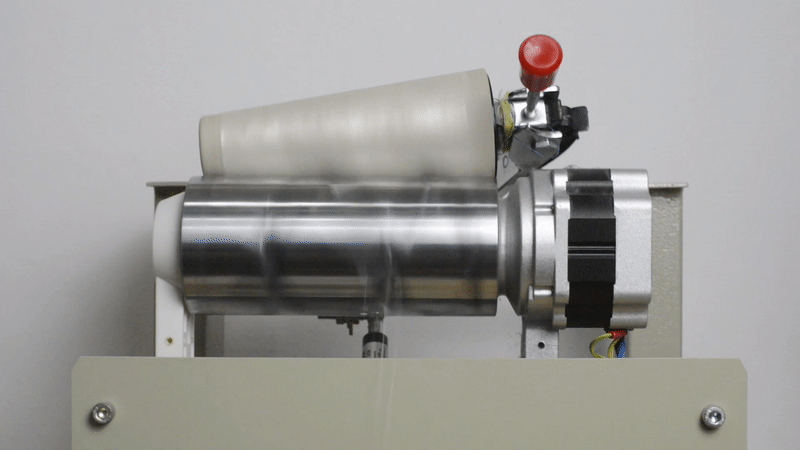
I worked with 10 cones at a time: winding 10 cones on the machine, before transferring them to the bobbins.
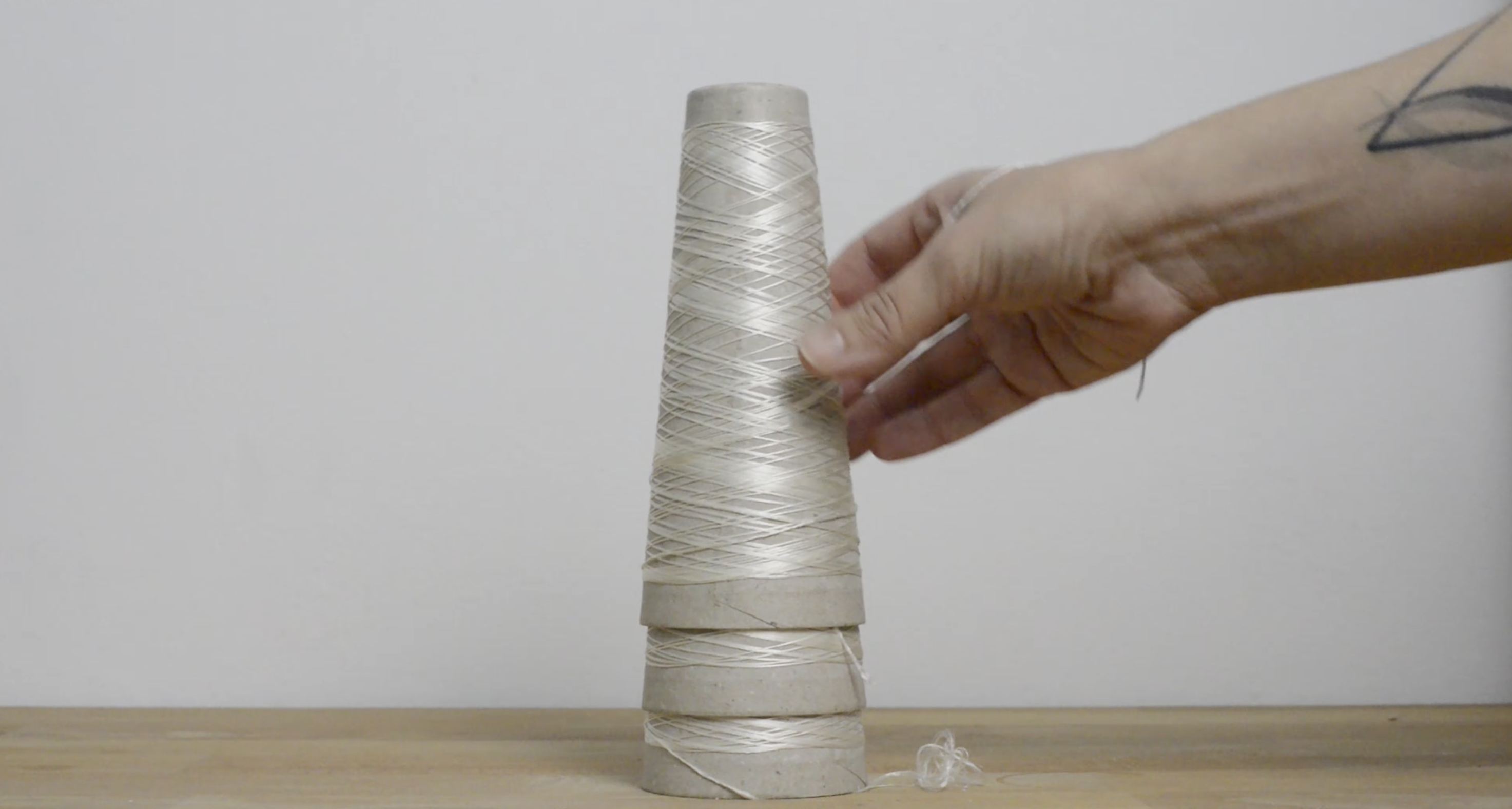
manual winding
To transfer each dose of silk to the bobbins, I used my manual bobbin winder which is designed for winding narrow paper pirns. The tapered spindle of the bobbin winder meant the 5mm hollow core of the bobbins could be secured with just a gentle-yet-firm push. Winding each bobbin by hand created a personal connection between myself, the silk and the bobbin and resulted in the following reflection:
Each millimetre of silk passes through my fingers, I feel the smooth texture run over the tip of my index finger. With time a small, reddish groove appears in my finger, as the silk leaves its mark on my body. I guide the silk with my left hand as I steadily turn the handle of the winder with my right. I keep a steady pace, steering the silk back and forth along the bobbin. The silk builds up unevenly, and I try to fill in the valleys to create an even surface, challenged to make it before the final millimetres of silk disappear through my hands. The physical silk leaves my body but the memory of it remains: a ghost sensation of silk running between my finger and thumb and the rotational rhythm of turning the handle continuing to pulse through my hand.
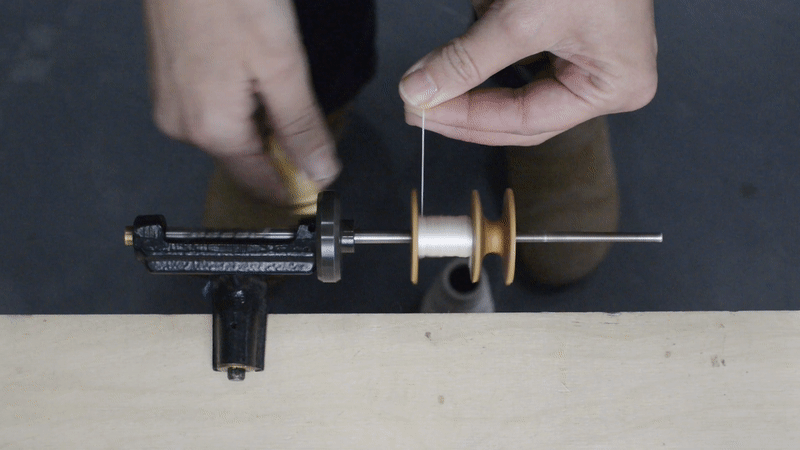
the universe in a bobbin
A wound bobbin is an emotional object to me. When I look at one, I see the journey of its creation: a tiny cosmos of material knowledge and personal experiences, encased within the grooves of wood and fibres of silk, like an organism preserved in amber.
In the shape of the bobbin I trace its provenance, starting with the roughly-cut blanks of cherry wood and the first sensations of applying my chisel as they turned on the lathe, alien and unconfident in motion. I remember the gradual progression of my skills, as I came to understand how to position my body and leverage it against my tools, and how to shift my weight oh-so-slightly as I changed angles. In the slickness of the wood grain, I can remember my frustration and confusion over tear-out, and the futile attempts to sand irrepairably rough wood into smooth submission, and slowly understanding how holding my tools at a particular angle, and cutting in a new direction would allow me to gradually master the grain. In the precise edges I see how I learned to recognise when my tools need to be sharpened and the cautious attempts at using a whetstone, not wanting to damage my valuable chisels. The rich cherry tones remind me how it felt to sand the bobbin into its smooth form: beginning with 80, 120, 150, and finally 240 grit, before dipping my paintbrush in tung oil and experiencing the pure satisfaction of watching the bobbin thirstily drink it up. And in the smooth centre hole I can remember the panic of watching small wisps of smoke appear as I drilled in using my bench press, and the unsettling smell of burning wood, a literal smoke alarm telling me to replace my tired drill bit. Finally, in the white silk I see the promise of the velvet that will be woven, of the material and emotional experiences waiting to be lived just as vibrantly as the bobbin lives.
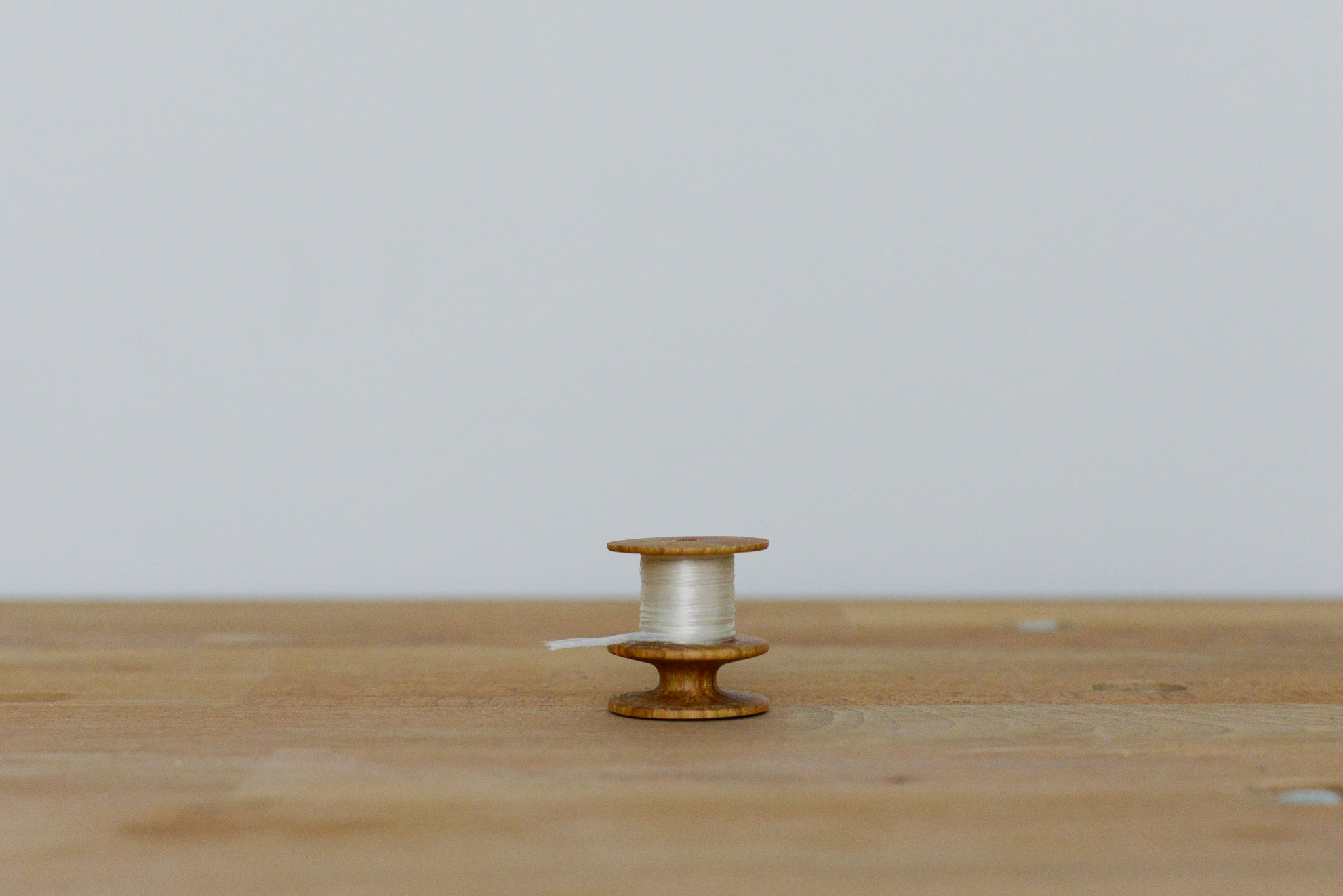
Datenschutzerklärung — Impressum
©Emma Wood 2025
